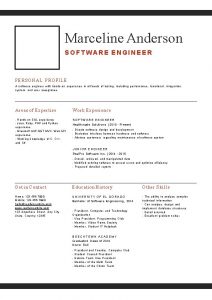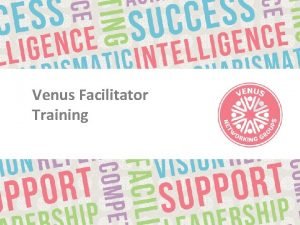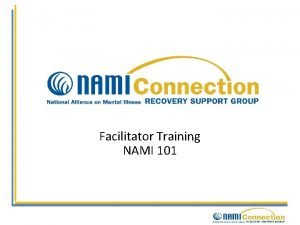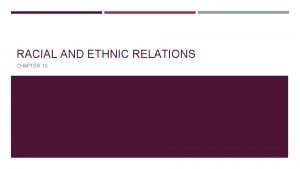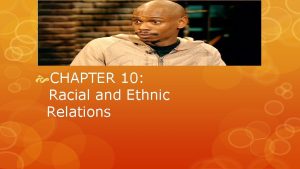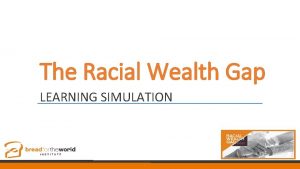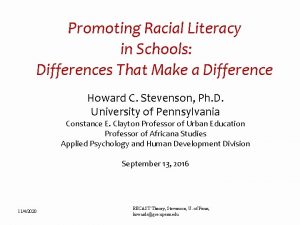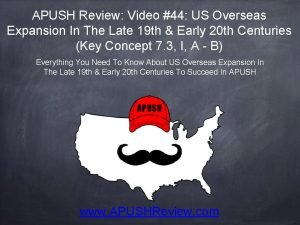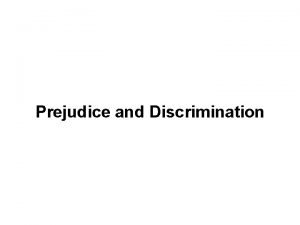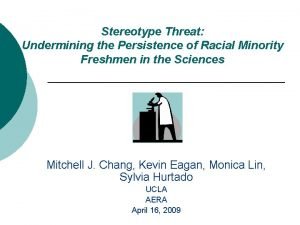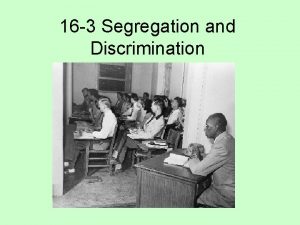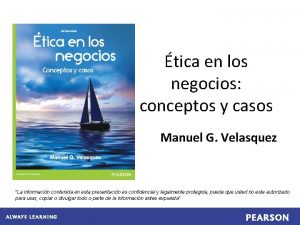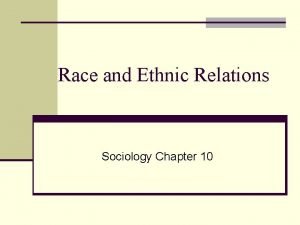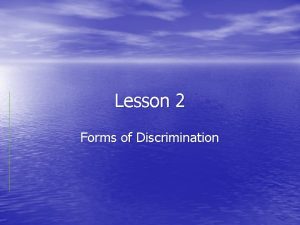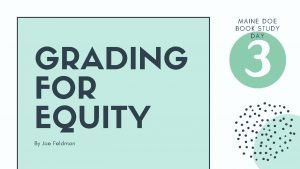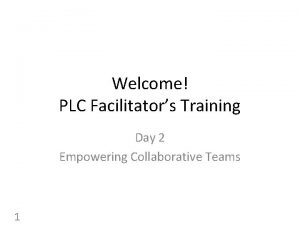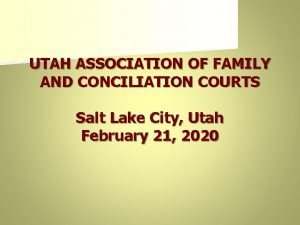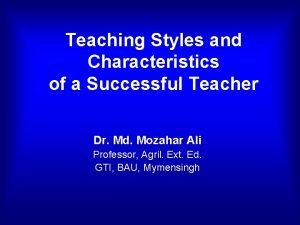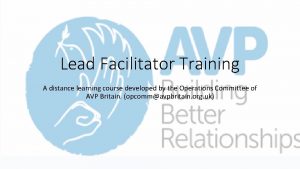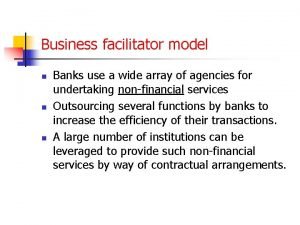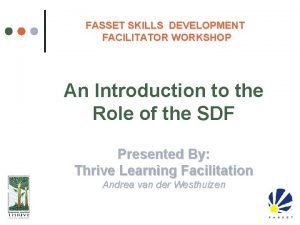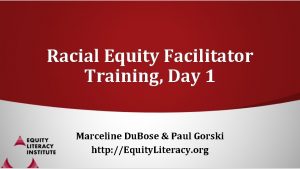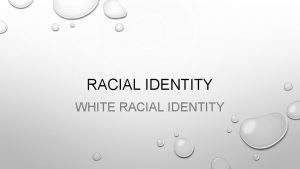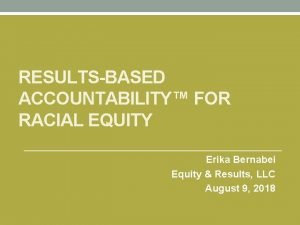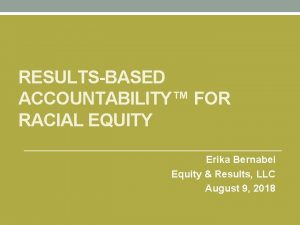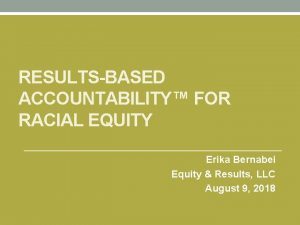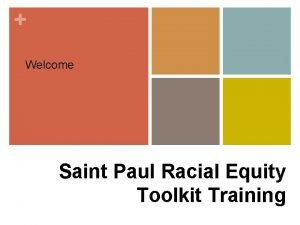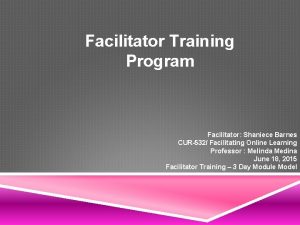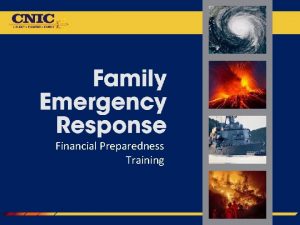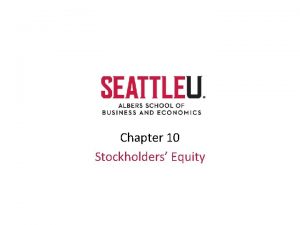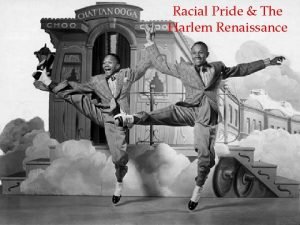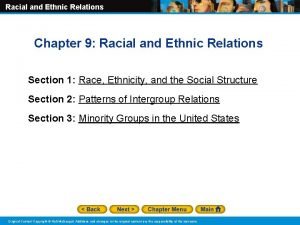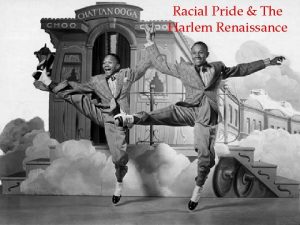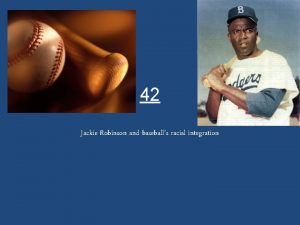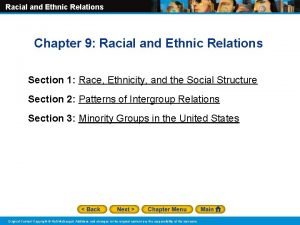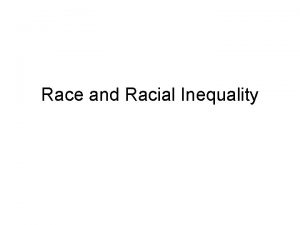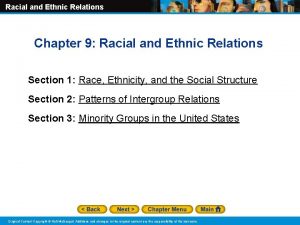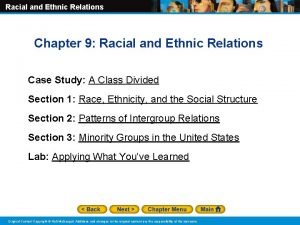Racial Equity Facilitator Training Day 2 Marceline Du




















































- Slides: 52

Racial Equity Facilitator Training, Day 2 Marceline Du. Bose & Paul Gorski http: //Equity. Literacy. org

Welcome • Check-in!—the chat… What have you been noticing or thinking about since last week?

A Few Notes • 4 -6: 30 ET, with 15 -minute break • Yes, we are recording • Our work is mostly with schools, universities, and nonprofits; we’ll provide examples from different contexts • We will be using our reflection log (3 minute reflection time between ideas) • Please share your thoughts and questions in the chat!

Layers of Racism

The Layers Sociohistorical Racism Ideological Racism Individual Racism Institutional Racism Cultural Racism Structural Racism

Ideology to Action My ideology How I interpret a disparity Solutions I can imagine for the disparity Extent to which I’m a threat to inequity or to the possibility of equity Actions I choose to address the disparity

Socio-historical Racism The way we’re socialized to make meaning of race—ascription of inferiority, for example— is so deeply embedded in people’s psyches and normalized that it’s implicitly considered by many people to be the truth

Socio-historical Racism Example: I have been socialized implicitly to be fearful of Black, Latinx, and Indigenous people-–socialized to interpret their behaviors as particularly threatening or hostile in ways I wouldn’t interpret the same behaviors in white students.

Ideological Racism The result of socio-historical racism is ideological racism, informing worldviews and belief systems • Note: ideological racism also can be a choice —people can (and often do) adopt a white supremacist ideology even if they don’t necessarily believe in inherent white superiority

Ideological Racism Example: I embrace and defend racist belief systems with which I was socialized, such as the belief that Black, Latinx, and Indigenous students misbehave more because their families don’t discipline them, even when presented with evidence that this is untrue (which it is). I can choose to have a different belief system, but I am comfortable with a belief system that assumes inferiority in “those people. ”

Individual Racism The result of ideological racism informing interpersonal interactions. One person takes a “racist” action against another person. • Not a question of intention, but a question of impact

Individual Racism Example: I take specific acts based on my ideological racism, such as by referring a Black, Latinx, or Indigenous student for discipline in a situation in which I would not do the same for a white student. I might not realize I’m perpetuating racism, because I’m behaving based on my unchecked ideological racism. It’s not about intent, but about impact.

Institutional Racism The implications of ideological racism operating in an institution (like a school, district, board, or university). Can be enacted through policies, practices, unspoken aspects of institutional culture that target or harm People of Color while advantaging white people.

Institutional Racism Example: Racial bias in policies, practices, and ideologies at my school, district, or board result in a pattern of Black, Latinx, and Indigenous students being suspended or expelled at higher rates than white students.

Cultural Racism Messaging about white superiority through sources that control the means of perception: the media, textbooks, social mores, and so on. Cultural racism feeds a sense of white superiority by suggesting white or European exceptionality.

Cultural Racism Example: School literature courses foreground and normalize works by white authors while exoticizing or separating out works by author of color.

Structural Racism The network of unjust distributions of access and opportunity built into all systems and structures in society that accumulatively advantage white people and their interests and disadvantage People of the Global Majority (People of Color) and their interests.

Structural Racism Example: Due to the accumulative impact of racism in and out of schools, students of color are at a disadvantage in school and pushed into the school-to-prison pipeline

Shift One Racism as solely individual, interpersonal actions Racism as structures of advantage and disadvantage

Shift Two Racism as an occasional incident that needs to be addressed when witnessed or reported Racism as ordinary and impacting everything, so we need to proactively be address it all the time

Shift Three Racism as solely a prejudiced belief system that can be adjusted with anti-bias training Racism as the accumulative impact of institutional, cultural, and structural racial injustice that must be addressed at their ideological, institutional, cultural, and structural core

Basic Equity Literacy Principles

Direct Confrontation Principle • A racial equity commitment requires direct confrontations with inequity. Avoid strategies, programs, and initiatives that are not a threat to inequity. • Identify the inequity, eliminate the inequity, develop actively equitable policies, practices, and institutional cultures.

Prioritization Principle • We must actively prioritize the interests of people whose interests historically have not been prioritized. • The institutional racism trouble with defining equity only as “giving all people what they need. ” Equity is about individual access and institutional change.

Equity Ideology Principle • Equity requires more than practical strategies. It is a lens and an ideological commitment. Sustainable shifts in practice are driven by ideological shifts.

Redistribution Principle • Equity requires the redistribution of material, cultural, and social access and opportunity. We do this by changing inequitable policies, eliminating oppressive aspects of institutional culture, and examining how practices and programs might advantage some students over others. If we cannot explain how our equity initiatives redistribute access and opportunity, we should reconsider them

#Fix. Injustice. Not. People Principle • Equity efforts never focus on “adjusting” the cultures, mindsets, values, emotions, or attitudes people from marginalized groups. They always focus on transforming conditions that marginalize and oppress people from marginalized groups.

Reflection Which of these principles would be the most transformative to your racial equity work? Which makes you most anxious? Which would illicit the most resistant in your organization? • Direct confrontation • Prioritization • Equity ideology • Redistribution • Fix Injustice, Not People

Case Study: Generalizations on Display 1. 2. 3. 4. 5. DIRECT CONFRONTATION PRINCIPLE PRIORITIZATION PRINCIPLE REDISTRIBUTION PRINCIPLE IDEOLOGY PRINCIPLE #FIXINJUSTICENOTKIDS PRINCIPLE How would you use the case study to practice and demonstrate these principles?

Sequencing

General Design 1. Introduction & discussion of goals 2. Ice-breaker or safe lead-in 3. Concept-development and paradigm-shifting a. Acknowledgement of the problem b. Information-sharing c. Higher-risk exercise and discussion 4. Practical application 5. Final reflections

Quick Reflection Why we don’t do ground rules or group norms or community agreements.

Narrative Icebreaker Inclusion/Exclusion Free write, then in small groups: 1. Share a time as a student when you felt alienated, disengaged, invalidated, excluded in a classroom environment. 2. Share a time when you felt especially engaged, validated, empowered.

Benefits of the Narrative Icebreaker • Invites all voices into the conversation • Provides opportunity for people to connect with the feeling of alienation (which we then can connect with bigger inequities) • Must give people the option of sharing or not sharing • Must avoid using a specific enough activity that it requires participants of color (participants of the global majority) to be “props” in the equity learning of white people

Reflection • What is the kind of warm-up activity you find especially useful and engaging? • What is the kind of warm-up activity that makes you anxious or uncomfortable?

Concept-Development & Paradigm-Shifting • Example: The Layers of Racism • Another example: interest convergence (see next slide)


Interest Convergence White people and white-dominated institutions will invest in racial justice efforts as long as their interests align (or “converge”) with the interests of racial justice. As soon as the interests diverge, they will disinvest.

So… Racial justice gains are made when they benefit white people.

Derrick Bell’s Signature Example Brown vs. Board of Education • During the cold war US wanted to show the world that it supported civil and human rights—desegregation was a way to do that

Interest Convergence and Racial “Diversity and Inclusion” Efforts • School leaders know that, at the very least, the optics of concern about equity is important, so most racial equity efforts are high on optics: student programs, “diverse” curricula, and so on • However, must schools fall considerably short of addressing racial equity in more serious, redistributive ways (because this is where interests diverge)

The Interest Convergence Measuring Stick (Applying the Concept) • In your school, district, or organization, what is the point of divergence—the point at which more serious racial justice efforts are met with criticism and backlash? • This is where the interests of racial advantage come into conflict with the interests of racial justice.

Analysis and Application • See linked handouts on our web page for more exercises

Planting Seeds: Equity Influencer

Equity Will What are the knowledge and skills I need to be a threat to the existence of inequity in my sphere of influence? Do I have the will to be that threat? “If you can organize your family, you are a great organizer. — Alicia Garza founder of BLM

How would you describe your equity facilitation?

in·flu·ence ˈinflo oəns/Submit • noun • the capacity to have an effect on the character, development, or behavior of someone or something, or the effect itself. • synonyms: effect, impact; • verb • have an influence on. • synonyms: affect, have an impact on, impact, determine, guide, control, shape, govern, decide;

Let’s Think about Power and Influence

What is Power or Influence? • The capacity to influence others. • The ability to make someone to do something he or she would not have other wise done. • The potential of influence – the resource that enables a leader to gain compliance or commitment from others • The ability to make things happen.

Types of (Social) Power and Influence POSITIONAL POWER – THE AUTHORITY GRANTED TO SOMEONE STEMMING FROM THEIR POSITION IN A GROUP OR ORGANIZATION. REWARD POWER – THE ABILITY TO REWARD COERCIVE POWER – THE ABILITY TO PUNISH IF EXPECTATIONS ARE NOT MET. EXPERT POWER – THE EXTENT OF SPECIALIZED SKILLS OR KNOWLEDGE ATTRIBUTED TO A LEADER. REFERENT POWER – THE DESIRE FOR A FEELING OF ONENESS AND ACCEPTANCE IN A VALUED RELATIONSHIP.

Power/Influence and Equity Leadership • Positional (Legitimate) Power is transient • Reward power and Coercive power reduce intrinsic motivation and thus, become less potent over time (i. e. more is required to achieve the same results) • The most effective combination for fully engaging people toward change: • Expert power + Referent power

http: //Equity. Literacy. org gorski@Equity. Literacy. org @pgorski / @Equity. Literacy
 Day 1 day 2 day 3 day 4
Day 1 day 2 day 3 day 4 Aggression replacement training facilitator training
Aggression replacement training facilitator training Marceline anderson
Marceline anderson Day 1 day 2 day 817
Day 1 day 2 day 817 Request letter for training facilitator
Request letter for training facilitator Thank you facilitator
Thank you facilitator Focus group agenda
Focus group agenda Thank you letter to training facilitator
Thank you letter to training facilitator Thank you for your facilitation
Thank you for your facilitation How to thank a training facilitator
How to thank a training facilitator Schwartz rounds facilitator training
Schwartz rounds facilitator training Fgd protocol
Fgd protocol Nami facilitator training
Nami facilitator training Jim crow laws in what region or regions did it exist
Jim crow laws in what region or regions did it exist Timid bigot example
Timid bigot example Chapter 10 racial and ethnic relations
Chapter 10 racial and ethnic relations Black studies and the racial mountain
Black studies and the racial mountain Racial wealth gap simulation
Racial wealth gap simulation Promoting racial literacy in schools
Promoting racial literacy in schools Anti imperialist league apush
Anti imperialist league apush Racial prejudice
Racial prejudice Mtaitos representing
Mtaitos representing Racial insults
Racial insults In what regions did the literacy test exist
In what regions did the literacy test exist Cartel ley organica contra la discriminacion racial
Cartel ley organica contra la discriminacion racial Chapter 10 racial and ethnic relations review worksheet
Chapter 10 racial and ethnic relations review worksheet Democracia racial
Democracia racial Lesson 2: racial discrimination
Lesson 2: racial discrimination Grading for equity discussion questions
Grading for equity discussion questions William beanes elementary school
William beanes elementary school Ocean the part day after day
Ocean the part day after day Day to day maintenance
Day to day maintenance As your room gets messier day by day, entropy is
As your room gets messier day by day, entropy is Tomorrow i don't know
Tomorrow i don't know L
L Growing day by day
Growing day by day Observation of seed germination day by day
Observation of seed germination day by day Day by day seed germination observation chart
Day by day seed germination observation chart Seeds vs spores
Seeds vs spores I live for jesus day after day
I live for jesus day after day Dying he saved me buried he carried
Dying he saved me buried he carried Day one day one noodle ss2
Day one day one noodle ss2 Afc futsal coaching course level 1
Afc futsal coaching course level 1 Plc facilitator
Plc facilitator Virginia math pathways
Virginia math pathways Family facilitator manual utah
Family facilitator manual utah Facilitator teaching style examples
Facilitator teaching style examples Facilitator course distance learning
Facilitator course distance learning Facilitátor feladatai
Facilitátor feladatai Fldg model
Fldg model Entrepreneurship facilitator services
Entrepreneurship facilitator services Ofo codes fasset
Ofo codes fasset Family law facilitator
Family law facilitator


